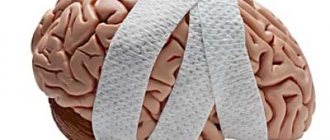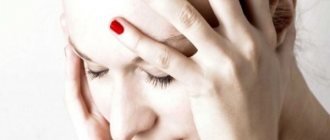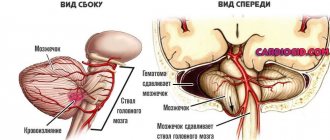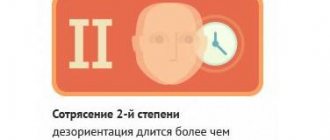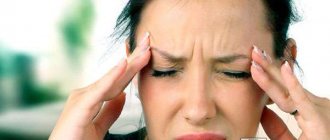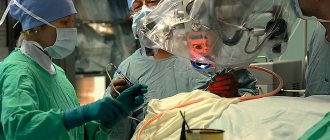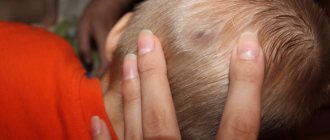Traumatic brain injuries are one of the common reasons for visiting a traumatologist. Concussion is a mild type of TBI that varies in severity. It is established based on the condition of the victim. Injury occurs due to mechanical impact. Most often it occurs when there is a sharp blow to the head during falls, accidents, or playing dangerous sports. Due to the prevalence of the problem, it is important to know how to identify a concussion and be able to provide timely assistance to the victim before doctors arrive.
Related articles:
Main symptoms and signs of mild concussion Possible consequences after a concussion How to recognize a concussion - treatment and consequences Treating concussions effectively at home Concussion in children - signs and treatment
How to identify a concussion in an adult
Based on the symptoms manifested, the issue of hospitalization of the victim and the amount of treatment is decided. Therefore, it is important to be able to identify symptoms at home that indicate an injury. In an adult, these signs are as follows:
- Fainting. A concussion is characterized by loss of consciousness, which can be short-term (a few seconds) or long-term (several hours). This reaction is caused by poor circulation. The more severe the damage, the longer the fainting will last. After regaining consciousness, a person may not react to external stimuli and be in a stupor. In this case, slow speech and inhibition are observed.
- Dizziness. This symptom occurs with any degree of concussion. It is accompanied by headaches in various forms: throbbing, sharp, dull, pressing. Spots appear before the eyes, noise in the ears, disturbing the victim for some time. The pain is usually localized in the occipital region or at the site of the blow.
- Nausea and vomiting. A mild concussion can be determined by the absence of vomiting in the victim. In other cases, with moderate and severe severity, vomiting can occur once or continue in the first hours after the injury. This reaction is reflexive, of central origin.
- Change in heart rate. Due to increased intracranial pressure, the victim's pulse may become faster or slower (more than 90 or less than 60 beats per minute at rest).
- Change in skin color. Due to a head injury, the activity of blood vessels is disrupted and they can narrow and dilate uncontrollably. This makes the affected person's skin tone very pale or red.
- Problems with coordination. At first it is difficult for a person to stand on his feet and maintain balance. There is a feeling that the body is difficult to control. This situation is normal in the first few hours after the impact. If such symptoms persist for several days, this indicates a moderate or severe degree of damage. Loss of coordination is explained by poor circulation and disruptions in the activity of nerve impulses responsible for transmitting information.
- Changes in pupils. The pupils can also determine the presence of brain injury. Dilated or severely constricted pupils are one of the symptoms of a concussion. If your pupils appear to be different sizes, this is a good reason to see a doctor immediately. Mild asymmetry indicates a severe concussion and deep damage to the brain tissue. If persistent asymmetry is observed, this is an indicator of intracranial hemorrhage resulting from trauma.
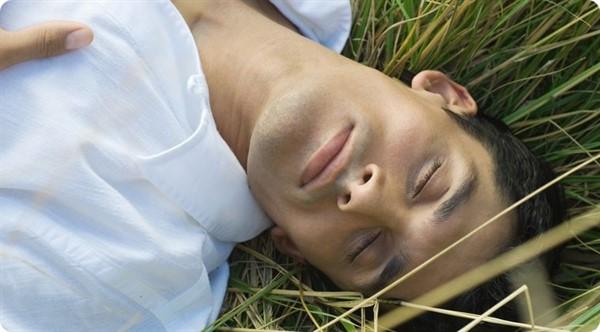
Know! An important sign of a concussion is a change in tendon reflexes. If, when struck with a hammer, the reaction of the limbs is different, this also indicates severe damage.
There are delayed symptoms that appear within a few days after the injury. These include:
- insomnia;
- amnesia;
- problems with concentration;
- sensitivity to light and sounds.
Some symptoms may appear for several years after the concussion.
Symptoms of a concussion
Before treating a concussion at home, it is worth understanding whether this type of injury actually occurs. Not every head injury results in a concussion. Therefore, it is important to distinguish the nature of injuries by symptoms. Many of them will be present with any, even mild, degree of concussion. You can suspect the presence of the disease based on the following signs:
- The person loses consciousness, sometimes for a very short time. If damage to the thinking organ is minimal, there may be no symptom.
- Seeing double. Often there is a veil before the eyes that does not go away for a long time.
- There is a pulsation in the head, it is spinning. Sometimes it becomes difficult to stand and move.
- The skin on the face turns pale, often pallor appears on the neck and other places.
- Nausea, vomiting may occur. If there is a danger of vomit getting into the lungs when a person is unconscious, it is worth turning him face down or laying him on his side.
- General weakness of the body occurs. It becomes difficult to move, every sudden movement causes pain in the head.
- Sweating increases, palms become moisturized.
- There is ringing in the ears.
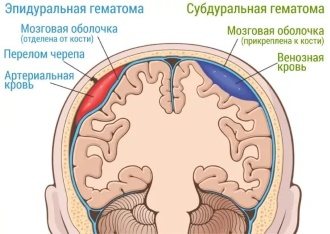
If, after receiving any injury, at least a couple of the listed symptoms occur, it is worth assuming that there is a concussion, the treatment of which at home is not as simple as it seems at first glance. You should call a doctor and provide first aid to the victim. For qualified help, it is worth knowing what to do in such cases. To begin, the victim is placed on a hard, flat surface. Next, clothing is unfastened, which can restrict a person’s movements, limiting the access of oxygen. Provide fresh air supply.
The head should be slightly turned to the side - this is necessary so that vomit does not enter the lung canals. If a person is in a helpless or unconscious state, he himself will not be able to turn in the correct way, which is why this step is especially important. The location of the tongue should be monitored. It should not block the passage between the nasopharynx and the breathing channels. You should not leave a person lying on their back if their head is thrown back. After performing these actions, you should leave the victim alone and do not disturb him.
If possible, it is worth applying a cold object or ice to the site of the injury. This will reduce the size of the swelling. The victim can only be moved if absolutely necessary and in compliance with safety precautions.
How to identify a concussion in a child
It can be difficult to identify a concussion in a child due to his age, especially if he cannot yet talk about his feelings. In addition, it is for children that the risk of injury increases significantly due to their mobility and carelessness. Symptoms vary depending on the age of the child. The older he gets, the more pronounced the consequences of the injury are.
How do doctors identify concussions in children? The clinical picture varies depending on the age group:
- Infants. Usually, when a concussion occurs, the baby does not cry, but only moans or sobs slightly. This can be confusing for parents. Therefore, the defining symptoms of an infant are pallor, vomiting, reluctance to eat, poor sleep or severe drowsiness. Babies, as a rule, do not lose consciousness from a blow. Due to increased intracranial pressure, the fontanel may protrude.
- Preschool children. Preschoolers may lose consciousness due to a blow or fall, after which they complain of headaches and vomiting. Their pulse and blood pressure change. The child sleeps poorly, gets tired easily, sweats, and is tearful.
- Children of school age and adolescence. They can already independently explain the nature of their symptoms. Most often these are dizziness, headaches, nausea, and difficulties with coordination of movements. Children may experience short-term amnesia.
Important! In children of school age and older, immediately after injury, a symptom such as temporary blindness occurs, which disappears within a few hours. It is still not known for certain why this phenomenon develops.
Duration of concussion
The recovery period can vary significantly, depending on the severity of the injury. It may take a month or several years. It is difficult to say how long treatment at home will last, because the duration of recovery is influenced by many factors that can aggravate the process:
- size of the lesion. Minimal bruises with the appearance of hematomas are treated by applying compresses. If an entire lobe of the brain is affected, the help of a doctor may be required; in such cases, treatment at home is unacceptable;
- a person has arrhythmia or any type of heart failure;
- severe headaches, which are signs of migraine or other similar diseases;
- inflammatory processes in the brain that occur after a concussion. Sometimes parts of the skull or emerging cracks become the causes of such processes. In such cases, medical intervention is required to localize negative phenomena;
- the incorrect lifestyle that the patient leads before and after the injury. Folk remedies can be used to treat a person for a long time and without results if before that he often drank alcoholic beverages or smoked a lot;
- age of the injured person;
Statistics say that a concussion, the symptoms of which are often subtle, and treatment at home is sometimes quite difficult, people in 80% of cases get while intoxicated. Therefore, it is important to monitor the condition and prevent cases where injury is possible.
First aid
For the victim, you need to call an ambulance, and until they arrive, you need to monitor him all the time. This is necessary to provide assistance in case of vomiting or seizures.
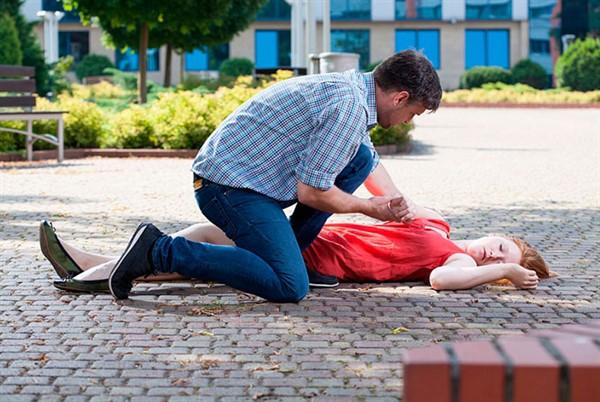
The procedure is as follows:
- The person must be carefully placed in a horizontal position so that the head remains slightly elevated.
- If he is unconscious, you should lay the victim on his right side or turn his head. This way he can breathe normally, and vomit and saliva will not enter the respiratory tract.
- If there are open wounds, you need to treat them with an antiseptic and apply a sterile bandage. Apply something cold to the site of the injury.
- It is necessary to provide the patient with access to fresh air by opening the window, eliminating all loud sounds and dimming the lights. In the first hours after a concussion, the victim may develop special sensitivity to irritating external factors.
Important! It is not recommended to give the patient any medications before the doctors arrive, except for analgesics for severe pain. First aid involves providing optimal conditions for waiting for the ambulance to arrive.
Who to contact
Typically, concussions are treated by a neurologist or neurosurgeon. It is especially important to consult a doctor if the patient’s condition worsens or new symptoms appear. However, initially the victim can contact a traumatologist to check the integrity of the skull bones after injury. First aid is provided at the emergency room; if a concussion is suspected, X-rays, computed tomography or MRI are prescribed. This will allow you to determine the extent of the damage received.
So, using an x-ray, the doctor will assess the integrity of the skull bones, an MRI will show severe complications - brain contusion, intracranial hemorrhage, ischemic damage. Using the image, the doctor will be able to check the condition of the bones and brain tissue. After this, the traumatologist will tell you where to go for further treatment. At the hospital, the victim is thoroughly examined and, if necessary, hospitalized.
A concussion is a dangerous injury that can lead to serious consequences in the future. Because of its prevalence, you need to be able to provide first aid to victims. This will help a person not only alleviate his condition while waiting for a team of doctors, but also save his life.
Will an MRI show a concussion?
Magnetic resonance imaging is a method that visualizes the brain substance with a slice thickness of 1 mm. High resolution determines the widespread use of this technology. The doctor receives an accurate image, diagnosis becomes faster, and conclusions are more reliable. MRI shows the following parameters for a concussion:
- brain structure;
- location and size of various areas;
- vascular condition;
- presence of neoplasms, etc.
With a concussion, there is no anatomical damage, and an MRI after the injury will show normal tissue. If the severity of the impact is greater, then a CT scan will be more useful. The method detects a fracture of the skull bones, rupture of a vessel and accumulation of blood (hematoma), as well as other changes. The described complications can be detected with bruise or compression of the brain.
